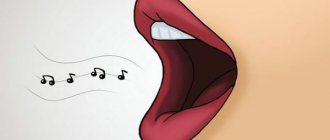Classic verbal-oriented approaches are losing their relevance, while working with the body is almost limitless in its possibilities. Body psychotherapy is an attempt to overcome the barrier between the mental and physical, it emphasizes the unity of body and mind, and suggests identifying some special wisdom in the physiological functioning of the body. Body-based psychotherapy focuses on deep bodily sensations and exploration of how needs, wants and feelings are encoded into the body, with the ultimate goal of developing more realistic approaches to resolving conflicts that relate to these needs. The specific experience of psychotherapeutic practice shows that the path to a person’s holistic presence in the world very often begins with a holistic presence in his body. And vice versa, distancing from one’s body, treating it as something alien is one of the main signs of mental illness of various etiologies and human insecurity. We often ignore signals from our own body that we have lost our way somewhere, have betrayed ourselves. If something oppresses you from the inside, either for a very long time or very sensitively, then the problem soon makes itself felt through the deterioration of your health. Source - Esoterics. Living Knowledge
Why is deep muscle relaxation technique needed?
First of all, this technique is suitable for the treatment and prevention of psychosomatic diseases. Deep muscle relaxation
has a direct physical effect, ranging from simple muscle relaxation to activation of the entire immune system of the body. It helps to achieve emotional and mental balance, creates optimism and automatically improves a person’s overall well-being.
Having learned to relax and influence your body, a person again begins to trust the body’s ability to resist illness. The body again becomes a source of joy and pleasure, in addition, it also serves as an important means of feedback on how effectively a person lives. A person gains contact with himself, his emotions. And to be your authentic self means to live in the fullness of your being, fully present in the situation, and therefore in your body.
Many people say that after relaxation exercises they begin to see everything in a different light and feel a surge of energy. This becomes a kind of energy recharging method. If a person manages to physically relax, this will break the vicious circle of fear and tension and restore the joy of life. Every chronically tense muscle in the body is a scared muscle; otherwise she would not have resisted with such tenacity and tenacity the flow of feelings and vital forces passing through her body. It is also an angry, angry muscle, since anger is a natural reaction to forced restrictions and lack of freedom. And, among other things, there is also sadness here due to the loss of even the potential opportunity to be in a state of pleasant excitement, when the blood circulates energetically, and the body seems to vibrate and permeate it with waves of positive excitement.
All practitioners of the body absorption technique said that they went through periods in their childhood or past experiences when they learned to suppress their hatred, anxiety or love through certain actions that influenced the autonomic functions (holding their breath, tensing their abdominal muscles). Exercises like “immersion in your body” help us get back in touch with our bodies and feelings, with our abilities, develop the ability to grasp the slightest nuances in changes in our own well-being and manage the processes of our body.
Breathing exercise
Movies often show a sequence in which the main character begins to breathe slowly to calm down. This method really works. When a person is stressed, breathing quickens and the body simply does not have enough oxygen. If you begin to inhale and exhale deeply, the brain will receive the necessary amount of air for normal functioning.
Breathing Practice: Sit or lie down and relax the muscles of your arms, legs, face and upper chest muscles. Begin to slowly inhale and exhale air through your nose while counting to four.
Take online courses for free and discover new opportunities Start studying
Why do psychosomatic diseases occur?
Why do such diseases occur (according to some researchers, up to 80% of patients in medical institutions can be classified as psychosomatic patients)? What drives people to the point of needing treatment is inattention to feelings or misunderstanding of them. Body psychotherapy implies that the mutual alienation of people is due to the alienation of a person from his own body and emotions.
One thing is characteristic of all people suffering from psychosomatic diseases: they do not know how, they are not taught to put their feelings into words and express them out loud. Psychotherapy teaches a person to recognize and express the fullness of his feelings, and not to repress them with bodily suffering.
What to do with thoughts that often interfere with the relaxation process?
To control a restless mind, you can use the technique of “replacing a stream of thoughts with one thought.” This is one of the main tools for streamlining the thought flow.
The essence of the technique is to concentrate thoughts on a specific object. For example, on a lotus flower. Imagine a lotus flower located in your lower abdomen. The flower opens and emits a red glow. Focus your thoughts on the glow. Other thoughts will disappear, and after a while there will be no need to think about the lotus at all, it will go into the background, and you will fall into a state of half-asleep.
One thought that you can focus on during relaxation could be movements such as folding your hands in front of you. Prayers, affirmations, and individual phrases that are important to you are suitable for this.
Mastering this technique provides a path to health, harmony in life and peace of mind.
Society
How can you blame someone for the fact that, while living in society, he completely followed its rules - after all, few people know how to adequately handle their emotions. Like everyone else, you were not even aware of the existence of any connection between emotional stress and illness. Therefore, your participation was almost certainly the result of unconscious beliefs and social norms of behavior.
The sources of pleasure are freedom of movement and lack of tension. The development of the capacity for pleasure is hindered by the influence of society, which requires people to neglect their primary needs, agreeing with social conventions and yielding to the needs of others.
Humans are social creatures whose survival depends on the joint and cooperative actions of the entire group. Restrictions on behavior that promote the welfare and prosperity of a group are not necessarily harmful or offensive to the individual within that group. The restrictions placed on feelings are a completely different matter. Since feelings constitute a person’s bodily life, assessing feelings as “good” or “bad” means assessing a given individual, and not his actions and deeds.
further reading
- Whiten, Wayne; McCann, Doug (2013). Psychology: Themes and Variations
. Nelson Education. pp. 242 and 632. - Raudebaugh, Kandy. Internal Health Studio
. n. About relaxation. Retrieved April 1, 2013. - Stress Relief Tools
. 2012. Retrieved April 1, 2013. - Grace, Susan. The Power of Autogenics
. Retrieved April 1, 2013. - How to Do Progressive Muscle Relaxation
(PDF). Anxiety BC. Retrieved April 1, 2013.
InterpretationTranslation Relaxation b>Relaxation, myorelaxation
(from the Latin
relaxatio
- weakening, relaxation) - a decrease in the tone of the skeletal muscles. Relaxation can be achieved through the use of special psychophysiological techniques, physiotherapy and medications. It is believed that relaxation helps relieve mental stress, which is why it is widely used in psychotherapy, hypnosis and self-hypnosis, yoga and many other health systems. Relaxation, along with meditation, has gained great popularity as a means of combating stress and psychosomatic diseases.
Relaxation is especially effective for people with increased muscle tone. It has been proven that increased muscle tone leads to the development of diseases.[1] For people with reduced muscle tone, the relaxation effect will be less. A sharp or progressive decrease or increase in muscle tone may be the result of illness.
Family
If you do not satisfy the needs of a small child to be fed, warmed, held in your arms, entertained, and given the opportunity to develop, his resentment is transformed into “primary pain,” which is subsequently hidden under the armor of physical and mental stress. Neurosis is a manifestation of this primary pain - a person finds such an outlet for his internal tension, which allows him not to be aware of painful experiences. This outlet necessarily represents some highly symptomatic form of self-destructive behavior, the purpose of which is to reduce the incessant internal anxiety. Such forms of behavior are constantly reproduced in endless and futile attempts to get rid of the unrecognized source of internal pain. This pain reflects the patient's awareness that he did not receive enough love from his parents as a child. The most unconscious, deep-seated psychological traumas that have a particularly strong and imperceptible impact on a person’s life are childhood psychological traumas. Any violation of family relationships does not pass without a trace for anyone, but for a child this factor becomes decisive.
Since childhood, a person is allowed to show only positive emotions, and negative ones (grief, melancholy, resentment, fear, dependence, bitterness, anger, etc.) are prohibited. The fact that a person does not show certain emotions does not mean that he does not experience them. Sooner or later, the “control mechanisms” of our emotional state fail. A stream of distorted and repressed emotions either pours out at the most inopportune moment or finds its manifestation through somatic symptoms. To condemn any feeling is to condemn life itself. Parents often do just that, telling their child that he (or she) is bad because he or she has certain feelings. This is especially true in relation to sexual feelings, but not only to them. Parents often shame their child for being afraid; this forces the child to deny the presence of fear and act bravely. But if someone does not feel fear, this does not mean that he is full of courage, but only speaks of his lack of feeling of fear.
By incorrectly protecting ourselves from strong negative impressions, we deprive ourselves of strong positive impressions.
Psychological trauma is a reactive mental formation (reaction to events that are significant for a given person), causing long-term emotional experiences and having a long-term psychological impact. The cause of trauma can be any significant event for a person: deception, betrayal, disappointment, injustice, violence, death of a loved one, experiences of loss, any crisis, illness. All these events may not be traumatic if a person has integrated them into his worldview.
Notes
- ↑
Jacobson, E. Progressive relaxation. — 2nd ed. — Chicago: University of Chicago Press, 1938. (English) - ↑ 12
Efficacy of abbreviated progressive muscle relaxation training: a quantitative review of behavioral medicine research (English) - ↑
Progressive Muscle Relaxation - ↑ 1 2 Capponi, V.;
Novak, T. My own psychologist. — 2nd ed. - St. Petersburg: Peter Press, 1996. - ISBN 5-88782-095-0. - ↑
Health Hint: Breathing Exercises - ↑
Relaxation Techniques for Health — At the National Institutes of Health (English)
Muscular armor
The muscle armor refers to chronic muscle tension, which protects against the experience of unpleasant emotions. When the muscles become tense, the senses become dull. In other words, the muscles that act as armor create obstacles to the flow of energy flowing in the body. Blocked by negative impressions and therefore not receiving an outlet, feelings and impulses are modified or suppressed, which leads to bodily stiffness, disturbances in energy processes in the body and personality changes.
In humans, any stress, any irritation leads to the release of “action hormones”. A stressful situation provokes muscle tension and prepares the body to respond to stress. Moreover, this tension is not always outwardly noticeable. In the modern world, the internal tension that has arisen does not discharge. And the so-called muscle tension remains - insignificant and passing over time. But if the stress experienced is repeated many times and often, then the tension accumulates and a persistent clamping of a certain muscle group occurs. Similar pockets of chronic muscle tension are found throughout the body, serving as visible signs of blocked impulses and lost feelings.
The muscle shell is formed as a result of the negative effects of stress. But not because a person is forced to mobilize all the forces of the body at certain periods of life. And because the situation was not resolved properly and there was no opportunity (or ability) to relax. The shell can be superficial or deep. Its function is to protect against displeasure. However, the body pays for this protection by losing a significant part of its capacity for pleasure. Relaxation of the muscular shell releases significant vital energy. Only after the suppressed emotion finds its expression can a person completely abandon his chronic tension and pressure.
The release of rigid (inflexible) muscles releases not only vegetative energy, but also brings the memory of a situation in early childhood when this clamp was used for a certain suppression. Chronic muscle tension blocks three main biological arousals: anxiety, anger, sexual arousal. By influencing muscle tension it is possible to influence the corresponding structures in the psyche, and vice versa.
The natural (real) Self rests deep within our body, buried under numerous layers of tension that serve as representations of our repressed feelings. To reach this deeper Self, the patient must travel back into the distant past, back to his earliest childhood. This journey inevitably creates pain, as it awakens unpleasant and frightening memories and brings to the surface numerous painful feelings. But as tension is relieved and repressed feelings are relieved, the body slowly and gradually becomes fully alive.
Story
The idea of relaxation in psychology was popularized by Dr. Edmund Jacobson in his published book Progressive Relaxation
.
It was a technical book intended for doctors and scientists. His book describes simultaneously tensing and relaxing specific muscles to achieve overall body relaxation. Jacobson then published another book entitled You Should Relax,
published in 1934, which was aimed at the general public. According to Jacobson, his research began in 1908 at Harvard University, and later moved to Cornell and the University of Chicago. His research was aimed at improving general human well-being.
In 1932, Johannes Schulz and Wolfgang Lüth developed a relaxation method that emphasized the use of the power of suggestion, called autogenic training.
In 1975, Herbert Benson and Mirium Z. Klipper published a book called The Relaxation Response.
, which provides instructions for linking meditation techniques to everyday activities that the average person can perform.
The joy of life
Man is unable to force his mind to experience joy. All positive bodily sensations begin with some initial state, which can be described as “good.” Its opposite is when a person feels “bad,” which means that instead of positive arousal, he has the opposite, negative arousal due to feelings of fear, despair or guilt. If fear or despair is too great, then it completely suppresses all other feelings and in this case the body becomes numb, becoming numb or lifeless. When feelings are completely suppressed, a person loses the ability to feel, which means sinking into depression - a condition that, unfortunately, can turn into a real way of life for some people. On the other hand, when, starting from an initial state of well-being, pleasant arousal gradually increases, a person experiences joy. And when joy fills the entire being, it turns into ecstasy.
If bodily life is strong and resilient, then feelings, like the weather, are changeable. At some point we may be angry, then full of love, and even later we may start crying. Sadness can give way to pleasure, just as rain can pour down after a sunny day. Such changes in a person’s mood, like changes in the weather, do not in any way disturb any fundamental balance of his personality. All these changes occur only on the surface and do not disturb those deep pulsations that give a person a feeling of completeness and quality of being. Suppression of feelings is a deadening process that entails a decrease in the internal pulsation of the body, its life force or vitality, its state of positive arousal. For this reason, the suppression of one feeling leads to the suppression of all others. If we suppress our fear, we also suppress our anger. And the result of suppressing anger is suppressing love.
Chronic muscle tension is the physical side of guilt because it represents the ego's negative attitude toward certain feelings and behaviors. Only a few of those who suffer from this kind of chronic stress actually feel guilty; most are not aware at all that they feel guilty or what exactly their guilt is connected with. In a certain, specific sense, guilt is a feeling of lack of right to be free, to do what a person wants. In a broader, general sense, it is a feeling of lack of lightness in the body when a person feels unwell. If a person in the depths of his nature does not feel good, then behind all this lies the thought: “I must have done something bad or wrong.” For example, when a person tells a lie, he feels bad or guilty because he has betrayed his true self, his true feelings. Feelings of guilt in relation to lying are completely natural. However, there are people who, when telling a lie, do not feel any guilt, but this happens because they do not feel anything at all - they have suppressed almost every feeling in themselves. On the other hand, it is impossible to feel guilty if a person feels good or if he is full of joy. These two states - feeling good/joyful and feeling bad/guilty - are mutually exclusive. Without inner freedom, which allows you to deeply feel and express your feelings in their entirety, there can be no joy.
From time to time all the hidden feelings and suffering rise to the level of consciousness, but since such an event threatens survival, they are pushed back down again. We are able to survive if we live on the surface, where we have the power to control our feelings and behavior; but this is accompanied by the need to sacrifice deep and genuine feelings. Living on the surface means, in terms of ego values, maintaining a narcissistic lifestyle, which is essentially empty and the result of which, as a rule, is depression. When a person begins to live in the depths of his being, it may seem painful and scary at first, but ultimately such a lifestyle can bring a sense of fulfillment and joy in life, if only we have the courage to walk through our personal hell with hope and purpose. reach heaven.
The deep feelings we have buried within ourselves are the feelings that belonged to the child we once were, the child who was innocent and free, the child who knew joy until his spirit was broken by what he was forced to experience. feelings of guilt and shame in connection with his most natural impulses and impulses. This child continues to live in our hearts and in our guts, but we have lost contact with him, which means that we have lost contact with the deepest parts of ourselves. To find ourselves, to find this buried child within ourselves, we must descend down into the deepest zones of our nature, into the darkness of the unconscious.
If the ego of a person accustomed to “appearing and not being” does not capitulate, then the person is not able to capitulate in the face of love. The miracle of love is beyond the reach of scientific knowledge. Science is unable to establish a logical connection between the heart as a pump for pumping blood throughout the body and the heart as the organ of love, which is feeling. Wise people have long understood this apparent paradox. Pascal’s statement that “the heart has its own rational reasons, which the reasoning mind cannot understand,” continues to be true today.
The ban on expressing one's feelings of fear, sadness and anger, the suppression of these feelings and the accompanying tension leads to a noticeable decrease in the motor activity of the body, resulting in a state of reduced or depressed, that is, suppressed, human vitality. Paired with this is a person’s illusory belief that they will love him or someone else for being good, obedient, successful, and the like. This mirage serves to keep a person in an inspired mood while he struggles to win love. However, since true love cannot be earned and it cannot be achieved by any success in any field, the haze of delusions will dissipate and the aforementioned illusion will sooner or later burst like a soap bubble. As a result, we become one more depressed person on our overpopulated planet. Depression will dissipate if a person is able to feel and express the feelings they are experiencing. Allowing a depressed patient to cry violently or fly into undisguised anger helps lift him out of his depression—at least temporarily. Any expression of pent-up feelings eases or even relieves tension.
All the therapist's patients suffer from some kind of illusion to one degree or another. Some harbor the illusion that wealth brings happiness, that fame brings with it a guarantee of love, or that demonstrating humility and submission protects one from possible violence. Such illusions are developed in us in the early stages of life as a means of surviving various painful and unpleasant situations in childhood life; later, as adults, we are afraid to give them up. Perhaps the greatest illusion of all is the belief that the conscious mind controls the body and that by changing the way we think we can change the way we feel.
Illusions are a means of protecting the ego from reality, and although they may temporarily relieve the pain caused by the frightening reality around us, illusions make us prisoners of a unreal world. Emotional health is the ability to accept reality as it is and not run away from it. Our basic and most real reality is our own body. Our Self is not at all an image or idea that lives somewhere in the depths of the brain, but a very real, living and pulsating organism. To know ourselves, we must feel our body. Losing sensation in any part of the body means losing some part of yourself. Self-awareness, which is the first step in the therapeutic process of self-discovery, means that a person feels his body - the whole body, from head to toe. Many people, when under stress, lose awareness of their body. They withdraw from the body in an attempt to escape and hide from reality, which results in serious emotional distress. But it is not only such people in our culture who abandon certain parts of their body. Each part of our body, if we actually feel it and are in contact with it, makes a certain contribution to our sense of our own Self. And the latter is possible only if the specified element of the body is characterized by vitality and mobility, or, in other words, mobility. If every particle of our body is charged with energy and pulsates elastically, we feel revitalized and joyful. But in order for this to really happen, you need to unconditionally surrender to the body with all its feelings and sensations.
The ability to surrender to the power of your body, to capitulate to it, means allowing the body to become completely alive and free. This means that all involuntary, reflexive processes occurring in the body, such as breathing, should be given complete freedom of action and should not be controlled in any way. The body is not at all some kind of machine or machine that a person must start or stop. Our body has its own “mind” and it knows what it needs to do. As a result, the only thing we really give up when we capitulate to the body is the illusion of the power and control of our mind.
Many people have rather confused ideas about reality, since they equate the surrounding reality with the accepted cultural norm, and not with what they directly feel and perceive with their body. Of course, if feelings are absent or reduced, that is, lowered, then a person seeks the meaning of life outside his Self. But those individuals whose body is full of life and pulsations can directly feel the reality of their existence, and we can say about them that this is truly sensitive and feeling people. How full of life a person is and how strongly he feels is a measure of his degree of contact with reality.
Self-discovery activities are largely a matter of maintaining contact with your body. Many people do not have such contact, or, at best, they feel only certain, limited areas and areas of their own bodies. Those fragments of the body with which a given person does not contact contain feelings that frighten him, which are doubles of the corresponding frightening images in his mind. The degree to which a person has lost contact with any part of his body indicates the extent to which he has lost a particular feeling or sensation associated with that part of the body. If the whole body becomes rigid, then such a person will never have feelings associated with tenderness. If we go to deeper levels, then many people do not have a feeling of love, because their hearts are locked in a rigid chest, which blocks both the awareness of the fact of the presence of a heart and the expression of heartfelt feelings, which include love.
The goal of therapy is for a person to discover himself, which will entail the restoration of his soul and the release of his spirit. There are three steps to this goal. The first of these is self-awareness, which means the ability to feel every part of your body and the feelings that may arise in it. Of course, when an individual manages to feel his sadness, pain or fear, this does not give him any joy at all, but if these suppressed emotions are not felt, then it will be impossible to get rid of them at all. Man languishes in a prison hidden behind this smiling facade, which does not allow the rays of the sun to penetrate the depths of the human heart.
The second step to self-discovery is self-expression. If feelings are not expressed, they become depressed and the person loses contact with himself. When children are prevented from expressing certain feelings, such as anger, or are punished for expressing them, such feelings have to be hidden and end up becoming part of a dark dungeon in the depths of the individual. A lot of people are terrified of their feelings, which they consider dangerous, threatening or crazy.
The third step to your own liberation is to achieve self-mastery. This state means that a person knows exactly what he is feeling at the moment; he is in touch with himself. He also has the ability to express himself appropriately and in a manner that best serves his highest interests. Such an individual is in complete control of himself. He was able to get rid of all sorts of unconscious props, pedals and controls that originated in the fear of being himself. He was able to let go of the guilt and shame about who he is and how he feels. He was able to release various muscle tensions in his body that had previously blocked his self-expression and limited his self-awareness. Their place has now been taken by self-acceptance and freedom to be oneself.
Since all those events and experiences of childhood that later give rise to the problems and difficulties of an adult are recorded in his body and find a structural reflection there, a careful “reading” of the body can provide the therapist with basic information about the past of a given person. This cannot be achieved quickly, it is by no means easy and it is not without fears and dangers. In some cases, such a journey can take a lifetime, but the reward is the feeling that your life was not lived in vain. A person can find the true meaning of life in the deep experience of joy.
Autogenics
Autogenics was invented by Dr. Johannes Heinrich Schulz in the 1920s. The process of autogenics is to deeply relax the muscles, and by doing so, the mind also relaxes. Autogenic training consists of six parts:
- Heaviness in body parts (arms and legs feel heavy)
- Warmth in parts of the body (arms and legs feel warm)
- Heartbeat (heart is calm)
- Breathing (breathing calmly)
- Warmth in the abdomen
- Cool forehead











